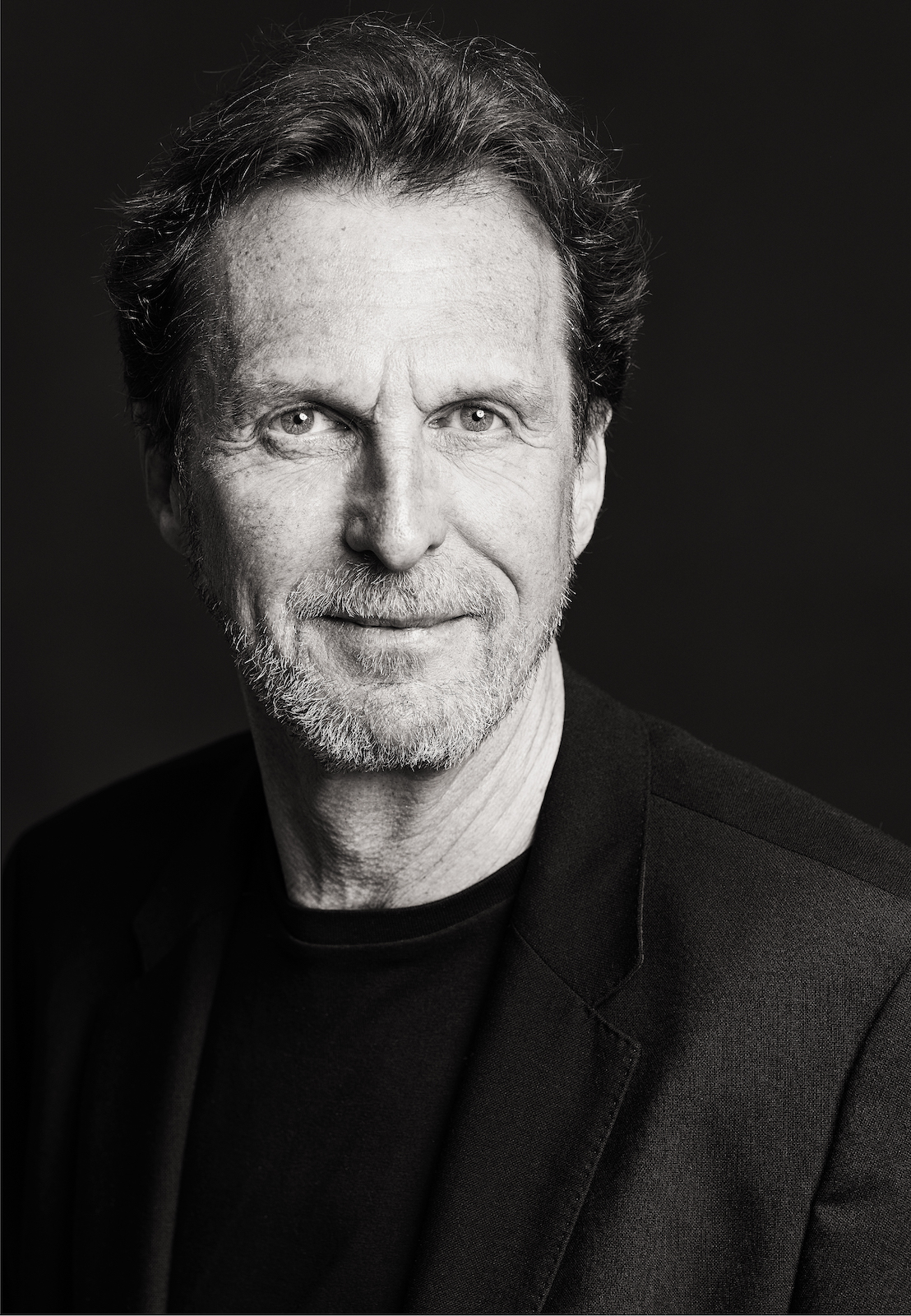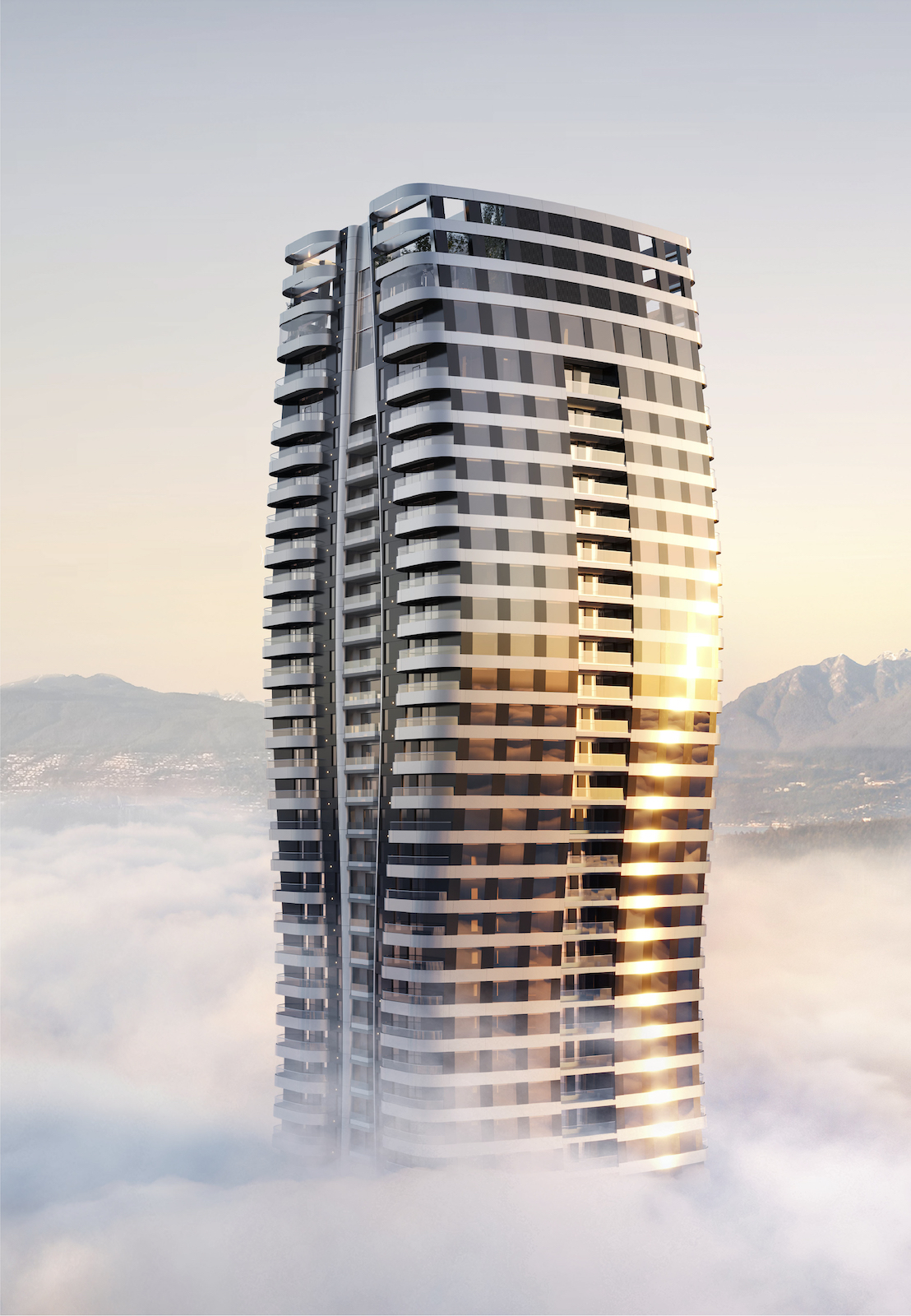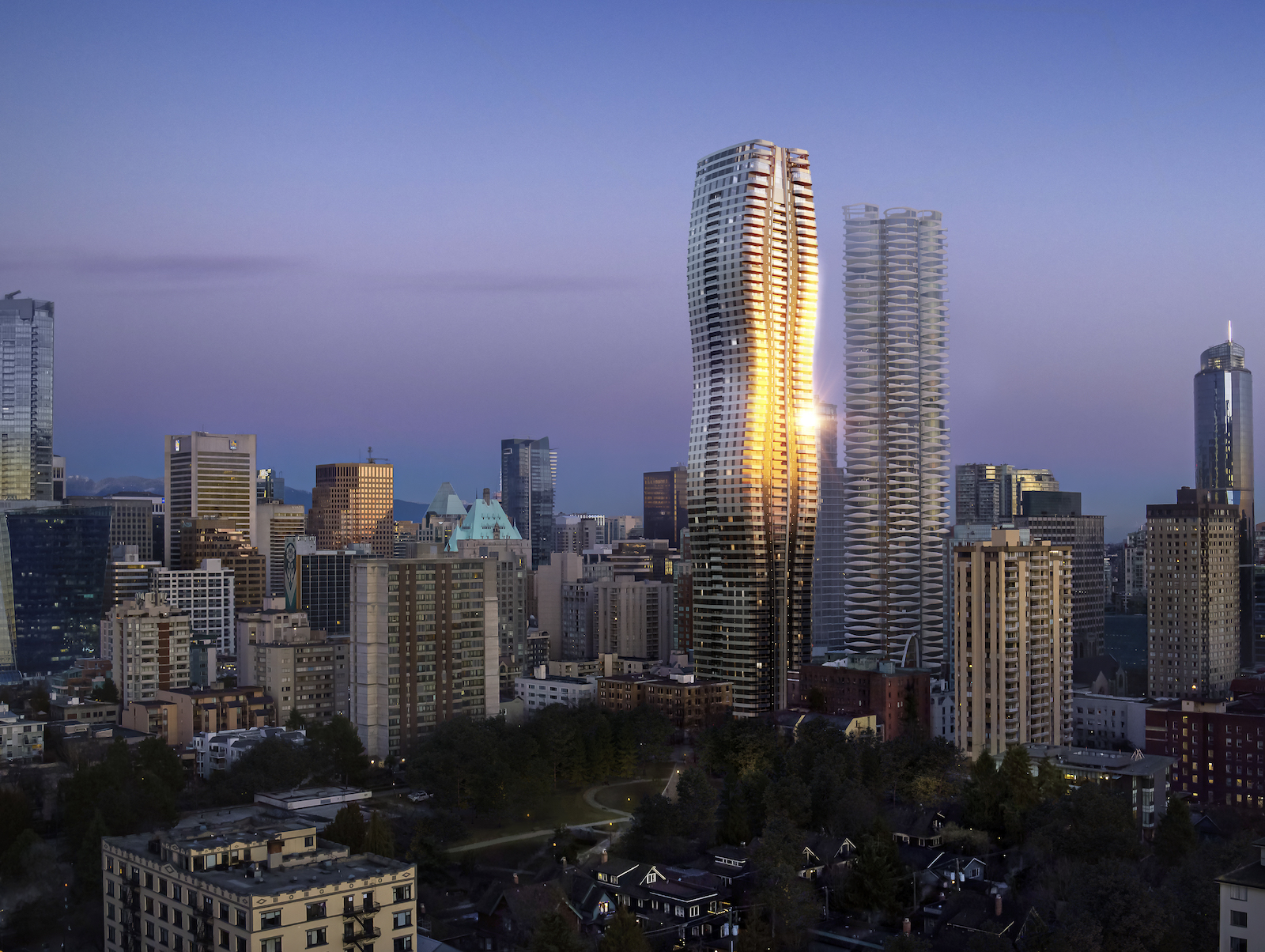The modern skyline is filled with linear buildings, whose carbon emissions, British architect Tom Wright suggests, have become synonymous with “overconsumption and the climate crisis.” In contrast, Wright’s newly designed eco-friendly building—the tallest passive residential tower in the world—will undulate gently on the crest of downtown Vancouver.
“It feels like a nice idea that an energy-efficient highrise in a city should take up some of the curves of nature,” he says from his office in West Sussex, England. “It’s fertile, feminine—a green shoot bursting through from the concrete of the old city.”
Curv marks the first foray into North America for Wright, who broke with sober construction to mastermind beautifully shaped buildings including the Burj Al Arab (Tower of the Arabs) Jumeirah beach resort, one of the most recognizable towers in Dubai. “That absolutely did its job,” he says of the iconic ’90s building that echoes an Arab dhow boat, but he insists that Curv’s passive house mandate is more important.
With homes and buildings responsible for some 13 per cent of national greenhouse gas emissions in Canada, it’s easy to see why the passive house movement has gained traction over a quarter of a century. Originating in Germany, the extraordinarily green standards include heat recovery ventilation, airtight construction, and high-performance insulation, but with an emphasis on comfort and affordability, too. Passive houses use 90 per cent less energy than typical existing homes, and 75 per cent less than regular new builds.

Architect Tom Wright.
“The passive house element moves it away from being a normal, low-energy building into something that’s a total other realm of save the planet,” Wright says. “What shocked me is really how simple the system is.” How, for example, it quietly renews the air in a building about 12 times a day, which is better for residents’ well-being, he continues. “Don’t think air conditioning,” he says. “It’s gentler—you won’t feel it.”
Still, Wright knew translating passive house standards into Curv’s 60 storeys—and 358 homes branded “luxury with purpose”—would mean blueprint revisions. Indeed, even before breaking ground, Montreal-based developer Brivia Group’s building has been seven or so years in the making, with WKK Architects, Wright’s U.K.-based practice, on board for five.
“Moving it up to this next scale has been tricky, and that’s what’s fascinating.”
Twice the height of the current tallest passive building in the world, Cornell Tech’s student housing on Roosevelt Island off Manhattan, Curv has needed much fine-tuning, including of the façade, to perform to the correct environmental standards. “People have experimented, but 30 is a long way from 60,” explains Wright, whose myriad projects span Europe and Asia as well as other parts of the Middle East. “Moving it up to this next scale has been tricky, and that’s what’s fascinating,” he says. “It’s the fun part of architecture.”
Not that working within the constraints of the City of Vancouver’s planning regulations was effortless. “We received huge support from head planners, mayors, politicians, and those who were into low energy—but lower down, because it was pushing the boundaries in certain ways, we stalled for months.”
Perhaps that’s why, he adds, there’s a “slight similarity” on display in Vancouver architecture. “Planners have written a set of rules around plots that almost dictate it will be a square building that goes straight up,” he says, adding that was a challenge for carving out an interestingly shaped highrise.
Wright hopes Curv—which has Andres Escobar and New York firm Lemay_id at the interior design helm—will add drama to the skyline. Passive houses’ high standards, he believes, blur the environmental line between the countryside and the city, and represent Vancouver’s desire to become the greenest city on the planet. It’s a goal bolstered by B.C’s prominent hydropower, which supplies almost 90 per cent of the province’s electricity.

“Buildings like this,” he says, “really fit into everything Vancouver says it wants to be.”
Although Vancouver has implemented strict building requirements and goals designed to bring new developments close to passive house levels by 2032, Wright says that making such standards compulsory for all developers would be even better. The Brussels Capital Region adopted mandatory passive house building standards in 2015, the first region in the world to do so, he notes. “Nobody else has had the guts to do it.”
Wright, who left the London-headquartered Atkins multinational architectural firm a decade ago to set up a smaller practice with Hakim Khennouchi and Geku Kuruvilla, says WKK encourages all clients to take an environmentally responsible approach to building.
Will Curv be another Wright icon? “We have given it legs to be,” he says. “I’d just love to feel that in the end it’s a building that they can wave with pride and wonder how other cities will respond on an eco level. Let’s hope there are many more after us.”
All photos courtesy of Brivia Group. Read more from our Summer 2023 issue.









